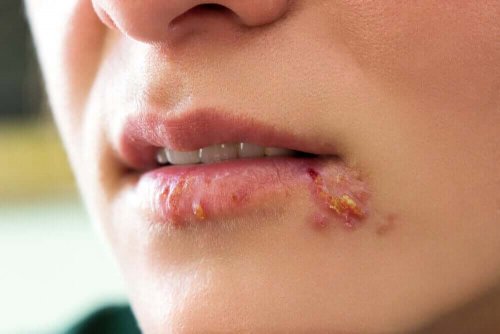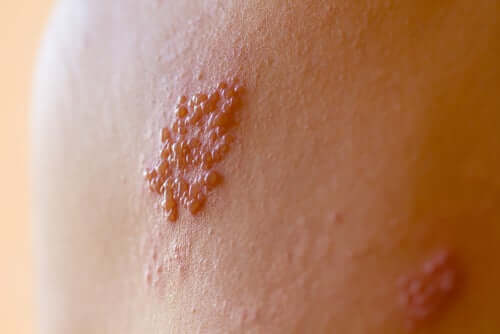Herpes Simplex Viruses and Their Characteristics

Almost everyone has heard about the various types of herpes simplex viruses, as they’re rather common infections. But the little known fact is there are several strains. Not only that, but each has different characteristics as well as different levels of intensity.
The most common types of herpes are variants 1 and 2 of herpes simplex. Estimates indicate that about half of the population has experienced herpes simplex type 1 at some point in their lives. It’s also likely that a third of the population has also experienced herpes simplex type 2.
None of the types of herpes have a cure but there are treatments that reduce symptoms and the possibility of contagion to other people also. Either way, a person with herpes can lead a completely normal life in most cases.
Types of herpes

Herpes is an infection caused by viruses belonging to the herpesviridae family. In its simple form, the appearance of small vesicles that contain fluid is its main characteristic. These lesions can be very painful. In addition, they sometimes break and form ulcers and scabs that often leave a scar behind.
There are at least 50 different types of herpes viruses. Their common denominator is that they can all cause an infection. They then remain dormant and can reactivate later, causing recurrent infections.
The word herpes comes from the Greek root herpein, which means “to meander.” Burnet and Budding discovered its latency properties in 1950. Some types of herpes can cause problems that significantly affect a person’s quality of life.
Herpes simplex virus type 1 (HSV-1)
This type of herpes mainly affects the lips, the inside of the mouth, and their surroundings. It’s a lot more frequent in children. In addition, it’s the most frequent herpes and is usually exacerbated by different circumstances such as stress, fever, exposure to sunlight and even menstruation. Usually, the second recurrences are milder than the first occurrence.
Herpes simplex virus type 2 (HSV-2)
This type of herpes affects the genital area and it’s most commonly transmitted through sexual contact. The lesions it produces are similar to those of oral herpes. Frequently, the initial episode is asymptomatic and can go unnoticed. However, subsequent episodes are usually very painful.
If a woman has active HSV 2 during childbirth, she can transmit it to the baby and it leads to neonatal herpes. Eventually, this causes problems in the nervous system that’s fatal in some cases.
Shingles or Zoster, another type of herpes simplex virus
This is one of the types of herpes that can lead to more severe complications and derives from chickenpox, the original infection. This virus migrates to the sensitive nerve fibers and remains dormant in the dorsal root ganglia.
The regrowth of the virus gives rise to herpes-zoster, which appears along the path of the nerve where it lived before. Usually, it’s very painful and, in a few cases, generates symptoms that can last for years. Researchers believe that 20% of the population may experience this type of herpes at some point in their lives.
Epstein-Barr virus (EBV)

This type of herpes and infectious mononucleosis are almost the same. It’s usually dormant in children, but adolescence triggers it. This fact can cause asymptomatic dissemination, which means the virus spreads without manifesting any immediate symptoms immediately.
Only in a few cases does it give rise to complications such as meningoencephalitis or Guillain Barré syndrome. This type of herpes is very benign at an early age.
Read also: How to Prevent a Neonatal Infection
Cytomegalovirus (CMV)
This virus can infect an average of between 50% and 80% of people. However, it’s uncommon for it to develop as a disease. Typically, it remains dormant in the kidneys, heart, and white blood cells.
Normally, it reactivates in people with weaker immune systems. It’s common in patients with AIDS, for example. It doesn’t have specific symptoms, and there are no drugs that are exclusive for its treatment.
You may be interested: The Four Best Remedies for Treating Genital Herpes
Human herpesvirus 6, 7 and 8 (HHV)
Doctors first noticed HHV-6 in 1986, in patients with AIDS. They believe that this virus of the herpes family is the reason for measles and also related to various neurological problems. It has two variants:
- HHV-6 type A: This type occurs in young children and doesn’t cause major symptoms. In adolescence, it reactivates and develops in a similar way to mononucleosis.
- HHV-6 type B: Researchers believe that all adults have type HHV-6B in our bodies but it’s asymptomatic, as far as they know.
Finally, HHV-7 also results in measles, while, HHV-8 is connected to Kaposi’s sarcoma. All these types of herpes occur mainly in people with AIDS or in those with immunosuppressed systems.
All cited sources were thoroughly reviewed by our team to ensure their quality, reliability, currency, and validity. The bibliography of this article was considered reliable and of academic or scientific accuracy.
- Bonnane, M. M., Clemente, K. R., Balbier, I. G., Azahares, A. D., & Serrano, N. M. (2012). Referentes teóricos sobre algunos tipos de herpes. Revista Información Científica, 73(1).
- Eagle, K., Kulkarni, A. G., & Brid, N. S. (1995). Herpes Zoster. New England Journal of Medicine. https://doi.org/10.1056/NEJM199506223322505
- Strumia, R. (2016). Herpes simplex. In Dermatological Cryosurgery and Cryotherapy. https://doi.org/10.1007/978-1-4471-6765-5_81
This text is provided for informational purposes only and does not replace consultation with a professional. If in doubt, consult your specialist.








